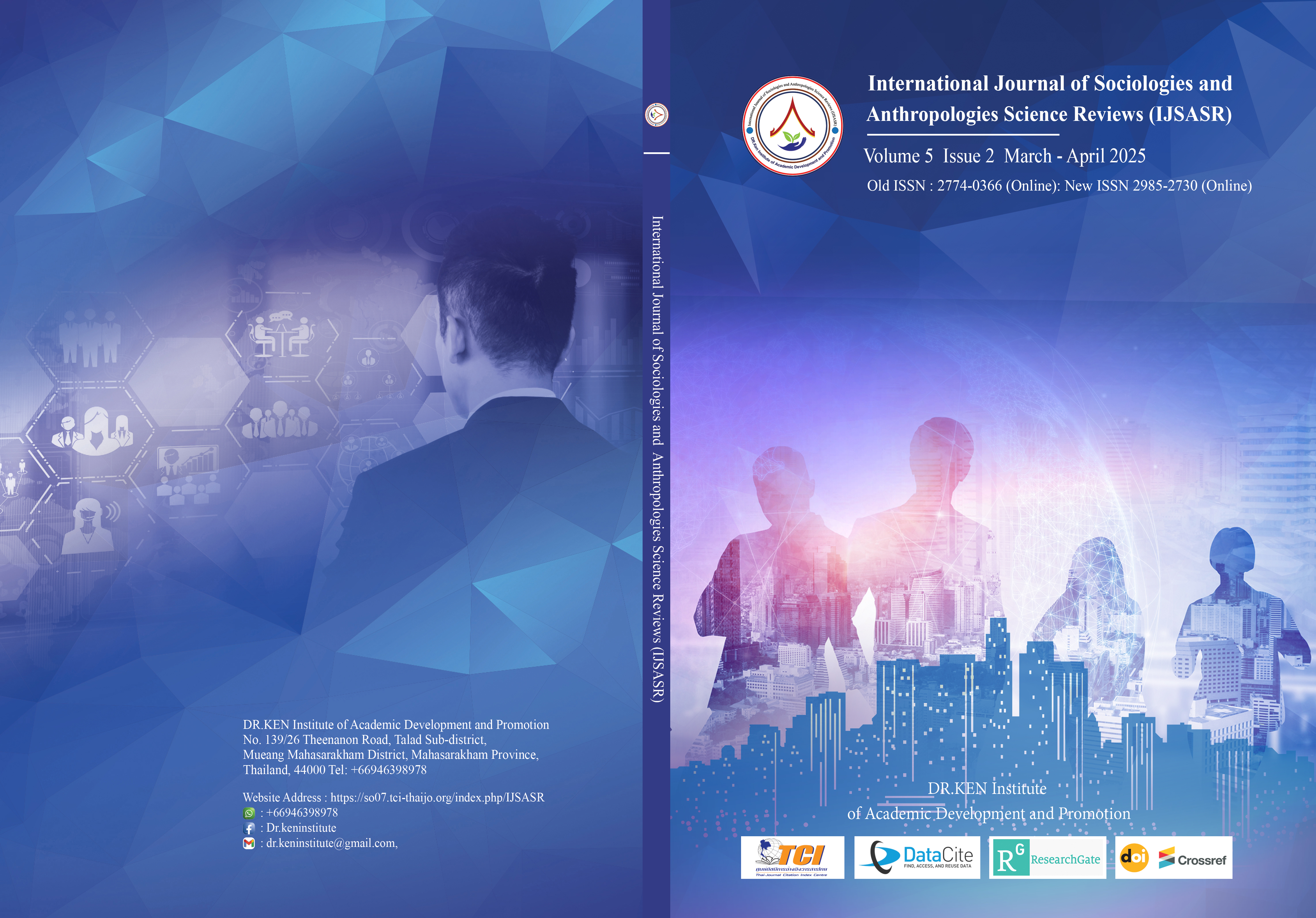Development of Just-in-Time Teaching Model to Enhance Aerobics Dance Learning Outcomes for Physical Education Majors at Normal University
Main Article Content
Abstract
Background and Aims: In the context of the development of the digital information age, higher education needs to carry out information teaching and innovation. In the aerobics course of physical education major in normal universities, Students were required not only to master the basic knowledge and technical skills of aerobics but also to have the application ability of information technology and the innovation ability, which were neglected in the current aerobics dance teaching. This study aims to develop a Just-in-Time Teaching (JiTT) model to enhance the quality of aerobics dance teaching.
Materials and Methods: In this study, a questionnaire survey was conducted among 24 teachers of aerobics dance and 327 aerobics students among 2160 students in 6 normal universities in Guizhou Province using the Taro Yamane method.; Secondly, 7 experts were interviewed to discuss the status quo of aerobics dance teaching in normal colleges in Guizhou province; Thirdly, 19 Delphi experts conducted two rounds of consensus, and the IQR < 1.5, the median >3.5, and the theJust-in-Time Teaching (JiTT) model elements were selected. Finally, 9 focus group experts explored the drafting of the aerobics dance Just-in-Time Teaching (JiTT) model; Finally, 9 experts participated in the Connoisseurship and using a five-point scale, confirmed the aerobics dance Just-in-Time Teaching (JiTT) model.
Results: This study constructed the aerobics dance Just-in-Time Teaching (JiTT) model, The conclusion includes 3 core categories: cognitive construction of knowledge skills, internalization enhancement of knowledge skills, consolidation sublimation of knowledge skills, including 9 first-level elements, 20 second-level elements, and 72 third-level elements.
Conclusions: The 3 core categories of the aerobics Just-in-Time Teaching (JiTT) teaching model were to form a benign closed-loop teaching model of continuous improvement. Experts agree that the constructed aerobics Just-in-Time Teaching (JiTT) teaching model has obvious advantages and potential in terms of frame structure, constituent elements, information adaptation, and the conformity of normal school students' training standards.
Article Details

This work is licensed under a Creative Commons Attribution-NonCommercial-NoDerivatives 4.0 International License.
Copyright on any article in the International Journal of Sociologies and Anthropologies Science Reviews is retained by the author(s) under the under the Creative Commons Attribution-NonCommercial-NoDerivatives 4.0 International License. Permission to use text, content, images, etc. of publication. Any user to read, download, copy, distribute, print, search, or link to the full texts of articles, crawl them for indexing, pass them as data to software, or use them for any other lawful purpose. But do not use it for commercial use or with the intent to benefit any business.

References
Ayu, H.D., Syagita, U., & Jufriadi, A. (2019). The effect of the just-in-time teaching (JITT) learning Model on the concept mastery of students' learning motivation. Jurnal Pengajaran MIPA, 24 (1). https://doi.org/10.18269/jpmipa.v24i1.17052.
Chen, Q. (2022) The Pragmatic Mechanism of Taking-Offence Online from the Perspective of Morality. Foreign Language Teaching, 3, 9-15.
Dai, J., Liu, Y., & Wang, Q. (2023). Reform and practice of physical education teaching under the background of teacher training professional certification: Taking Yan Cheng Normal University as an example. Journal of Physical Education. (01),112-117. doi:10.16237/j.cnki.cn44-1404/g8.2023.01.008.
David, A., Miranda, A., Lizcano-Dallos, R., & Pinzón, E.F. (2023) Improving the Physics Learning Outcomes of Engineering Students Through Just in Time Teaching (JiTT). IEEE Revista Iberoamericana de Tecnologias delAprendizaje 18, (2),190-197. DOI: 10.1109/ RITA. 2023.3264446.
Gong, L.Y., Yu, W.Q., Chen, X.J., & Liu, D. (2022). Practice and Research of Intern Teaching Based on Just-in-Time Teaching (JiTT) model. Journal of Taizhou Vocational and Technical College, (01), 89-91.
Li, J., Yang, E.L., Zhang, H.X., & Li, H.D. (2020). development and Implementation of the "JiTT" Interactive Teaching model for Offshore Oil and Gas Engineering English. Journal of Higher Education. 32, 81-84.
Likert, R. (1932). A technique for the measurement of attitudes. Archives of Psychology, 22 140, 55.
Lu, X. (2023).Research on the reform of project-based learning teaching in college courses under the background of teacher training professional certification: Taking "Curriculum and Teaching Theory" as an example. Journal of Suzhou Education Institute. 1, 17-23. doi:10.13985/j.cnki.34-1227/c.2023.01.019.
Lu, Z.Y. (2022). Case Analysis of OBTL Teaching Model Based on JiTT Network. Electronic Technology (09), 34-37.
Madiraju, C., Tellez-Corrales E., Hua, H., Stec, J., Nauli, A.M., & Brown, D.M. (2020). Analysis of Student Perceptions of Just-In-Time Teaching Pedagogy in Pharm D Microbiology and Immunology Courses. Frontiers in immunology. 11 (352), 1-11.
Marrs, K.A. & Chism, G.W. (2005). Just-in-Time Teaching for Food Science: Creating an Active Learner Classroom. Journal of Food Science Education, 4(2), 27-34. Retrieved September 28, 2024 from https://www.learntechlib.org/p/104539/.
Novak, G. M. (1999). Just-in-time teaching: blending active learning. Prentice–Hall.
Sun, Y., Xiao, N.N., Dong, D.W., & Lu, C.K. (2020). Research on Online and Offline Blended Teaching model of aerobics dance. Journal of Changchun Normal University. 8, 177- 179.
Tang, C.H., Fu, H.J., & Gao, W.C. (2019). Course Teaching Design Based on Just-in-Time Teaching (JiTT) model. Journal of Shandong Vocational and Technical College of Commerce. 4, 46-49.
Wang, J. (2019). Research on Aerobics Dance Talents Training Based on Employability Orientation. Journal of Heihe University. 3, 128-130.
Xu, J. (2019). Research on the Application of Micro Video in Just-in-Time Teaching (JiTT) model. Science and Technology Horizon. 36, 161-162.
Zhang, C.Y., & Yang, G.Z. (2023). Construction of hybrid teaching mode of college aerobics optional course based on SPOC. Contemporary Sports Science and Technology, 16,43-47. doi:10.16655/j.cnki.2095-2813.2303-1579-7768.






